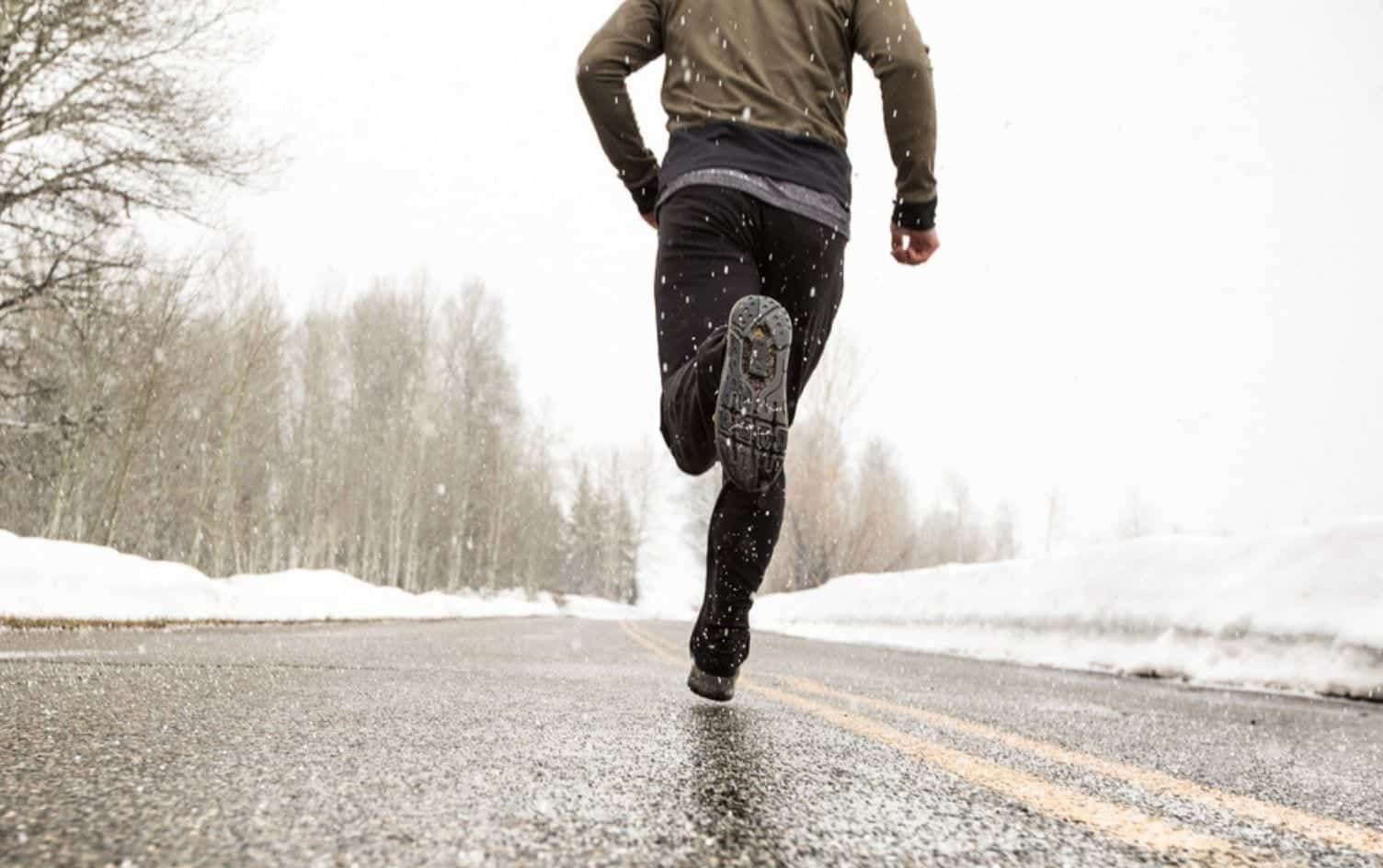Running in the cold is tough on everyone. It’s chilly, it’s snowy, and it’s more complicated than running in good weather when you can just put on shorts and a tank top, lace-up and head out the door. But a chilly day shouldn’t mean skipping your run entirely. With the right layers and a few considerations with your route choice and safety in mind, you’ll be logging miles even on freezing days.
CHANGE YOUR EXPECTATIONS
If you’re new to winter running, you may want to start with shorter runs to get used to running in bulkier gear and chillier conditions. You can also expect your pace to change. You may notice you actually feel faster in cold weather, but some people may find it’s harder to get up to speed. Warming up often takes longer, though cooling down is quicker. Give yourself a break from stressing about pace and distance as you get going — that can come later.
DRESS THE PART
Layers are your friend when it comes to winter running, especially for new runners who may not have the perfect cold-weather gear. Not only are layers more cost-effective, they’re practical: As you adjust to the cool air, you may want to shed a layer for intervals, then put it back on for your cooldown. Try to use sweat-wicking materials for your baselayers (skip cotton, which gets sweat-soaked quickly), and add layers on top. Get creative: If you don’t have a winter running coat, layer a base layer, a warm-but-thin sweatshirt, and a raincoat or windbreaker.
SAVE YOUR SKIN
Cover as much of your face and head as possible with a buff and a hat you can pull down over your ears, or get a full balaclava if you live in a place where temperatures regularly drop below freezing. In extreme cold, clear sunglasses or even ski goggles protect your eyes from cold, snow and wind. Your face may potentially end up feeling dry and chapped if you leave any piece of skin bare, so make sure you’re wearing a moisturizing sunscreen (yes, you can still sunburn in the winter!) and taking care of your skin when you get home. Unfortunately, a super-hot shower will strip your skin of moisture, so avoid boiling yourself like a lobster post-run, no matter how tempting that sounds.
KEEP HANDS AND FEET WARM
Your hands should never get numb on a run. If they do, you need warmer gloves! A lot of runners swear by mittens for the added warmth, and frostbite experts agree mittens work better than gloves. Carrying supplies gets tricky as your gloves get bigger, so you may need to get a belt, vest or pack to stash your phone, but it’s critically important your hands stay warm. Feet, too: If you’re running in below-freezing temperatures, you’re likely going to want to switch to a warmer sock material like merino wool, which can keep your feet warm while still wicking sweat. If you live in a truly wintery climate, consider scoring a pair of winter-specific running shoes made with warmer, water-repellent fabrics to keep your feet better protected.
PUT SAFETY FIRST
With cold weather running, stay on the lookout for signs you’re getting too cold or are at risk for hypothermia or frostbite. Shivering, even while running, losing feeling in your fingers and toes, or having trouble speaking clearly are all signs you should cut your run short and get warm. On the road, run opposing traffic so you can see what’s coming, and stay alert: Drivers don’t expect to see people running when the weather is bad.
CHOOSE THE RIGHT ROUTE
When running in bad weather, there are a few things to consider about your route. First, focus on a route with plenty of room, whether it’s a sidewalk, road shoulder or a wide path. Well-lit options are ideal for avoiding slips and slides on sneaky ice patches. For the most comfortable route, look for options that offer the most shelter on blustery days, and avoid running in a direction that has you coming home in a headwind. Also, pick a route with a few potential stopping points, whether that means a coffee shop or grocery store that you can dash into to warm up.
HAVE FUN
Running in winter can be demotivating: It’s chilly, and the idea of staying curled up on the couch is likely much more appealing than layering up and getting out the door. But, once you get going, you’ll warm up quickly. Focus on the fun stuff: Enjoy the quiet, watch your breath, note how resilient you are! Remember, while running in the cold weather might make you grumpy now, there may come a point in August when temperatures are soaring and you miss the frost.
Check out “Workout Routines” in the MyFitnessPal app to discover and log workouts or build your own with exercises that fit your goals.




